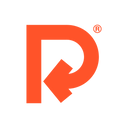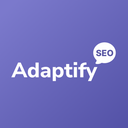How to Avoid Zoom Fatigue

Video calls have taken over our lives so much that ‘Zoom fatigue’ is now an actual thing.
There’s no doubt video calls have been a socially-distanced lifeline to keep us connected to our friends and family while in lockdown. We’ve kept up with our hobbies, fitness classes, reading groups, and ukulele clubs, and video calls have even allowed us to take part – albeit remotely – in major life events such as weddings and funerals.
But make no mistake, video conferencing at work on platforms such as Zoom, Skype and Google Hangouts is leaving us drained at the end of our working day.
Hence the term ‘Zoom fatigue’.
The reason for this new Zoom fatigue phenomenon is that, although technology has allowed us to communicate and keep in touch in a way we wouldn’t have been able to had the pandemic struck, say, thirty years ago, talking to a computer screen is simply not a natural way to communicate.
Video calls force us to focus and concentrate more intensely than we usually would – for example, if we lose concentration for a moment, it’s not as easy to say a quick, ‘Sorry, I didn’t catch that’.
We have to constantly look straight ahead at the screen to let the person who’s talking know we’re listening to them. It’s also more difficult to gauge body language and other visual clues, such as facial expressions.
All this boils down to our brains working harder than they usually would in a conversation, and leaving us tired and worn out by the end of the day.
Video conferencing isn’t going to go away though, so how can we avoid Zoom fatigue and make video calls less exhausting?
Let’s have a look at a few options.
Have fewer video calls
Having fewer video calls sounds obvious, really, doesn’t it? But it’s easier said than done when everyone wants to chat. After all, video calls can seem like the ideal way to communicate – you get to see your colleagues and talk in real-time, just as if you were in the same room.
If you’ve been away for a length of time such as on vacation or on a sabbatical, seeing each other’s faces while catching up can be a good thing.
But do all meetings need to take place via video? Take a look in your diary and see if any of the topics for the scheduled meetings can be discussed another way such as by email, phone or instant messaging and, if they can, propose this to the others in the meeting. There’s a good chance they’re also suffering from Zoom fatigue and will be relieved to be able to cross off a video call from their calendar.
Once you’ve cleared your calendar of unnecessary video calls, if you have a shared calendar, block out chunks of time to stop anyone scheduling a video conference with you. You could also arrange with your team to have a meeting-free day at least once a week or, alternatively, choose only one day in which to have video meetings.
You’ll find that, not only will fewer meetings leave you feeling less drained, with fewer interruptions, you’ll become more productive too.
Hide yourself
No, we’re not talking about hiding when it’s time for yet another video meeting, no matter how tempting that might be. We’re talking about that little image of yourself on the screen that you can’t help looking at.
Obviously, in a face-to-face meeting, we’re not looking at a mirror, so that little image of ourselves on the screen makes us become self-conscious and places a higher mental burden as we concentrate on what the other person is saying at the same time as looking at ourselves.
When you log in to your video call, turn your camera on as usual so you can give yourself a once-over to check everything’s as it should be (e.g. you haven’t got the remains of your lunch over your face), then turn off self-view to give your brain one fewer thing to concentrate on.
To really give yourself a bit of a break, turn off your camera completely and just listen to your colleagues instead. Turning your camera off means no one can see what you’re doing, so if you want to stretch your legs and walk around your room while someone’s talking, no one’s going to know.
We’re into rapidly changing times with COVID-19 and a massive shift to remote working, so video conferencing is here to stay. Be mindful of its impact and follow these simple ideas to avoid Zoom fatigue.
About the author
Gary Bury is co-founder and CEO of Timetastic, an independent and profitable web app for managing time off work, used by thousands of companies around the world.
Related Posts:


Featured Remote Jobs
 New Job! Featured Job Remote Job
New Job! Featured Job Remote Job Opened 4 days ago Featured Job Remote Job
Opened 4 days ago Featured Job Remote Job Opened 5 days ago Featured Job Remote Job
Opened 5 days ago Featured Job Remote Job Opened 6 days ago Featured Job Remote Job
Opened 6 days ago Featured Job Remote Job Opened 7 days ago Featured Job Remote Job
Opened 7 days ago Featured Job Remote Job Opened 7 days ago Featured Job Remote Job
Opened 7 days ago Featured Job Remote Job Operations & Communications Lead Needed for Property Management Company on Tropical IslandSunstays Ltd$1.2k - $1.5k per monthOpened 7 days ago Featured Job Remote Job
Operations & Communications Lead Needed for Property Management Company on Tropical IslandSunstays Ltd$1.2k - $1.5k per monthOpened 7 days ago Featured Job Remote Job Opened 7 days ago Featured Job Remote Job
Opened 7 days ago Featured Job Remote Job Opened 8 days ago Featured Job Remote Job
Opened 8 days ago Featured Job Remote Job Opened 11 days ago Featured Job Remote Job
Opened 11 days ago Featured Job Remote Job Closes in 15 days Featured Job Remote Job
Closes in 15 days Featured Job Remote Job Closes in 10 days Featured Job Remote Job
Closes in 10 days Featured Job Remote Job Closes in 8 days Featured Job Remote Job
Closes in 8 days Featured Job Remote Job Closes in 8 days Featured Job Remote Job
Closes in 8 days Featured Job Remote Job Closes in 8 days Featured Job Remote Job
Closes in 8 days Featured Job Remote Job
